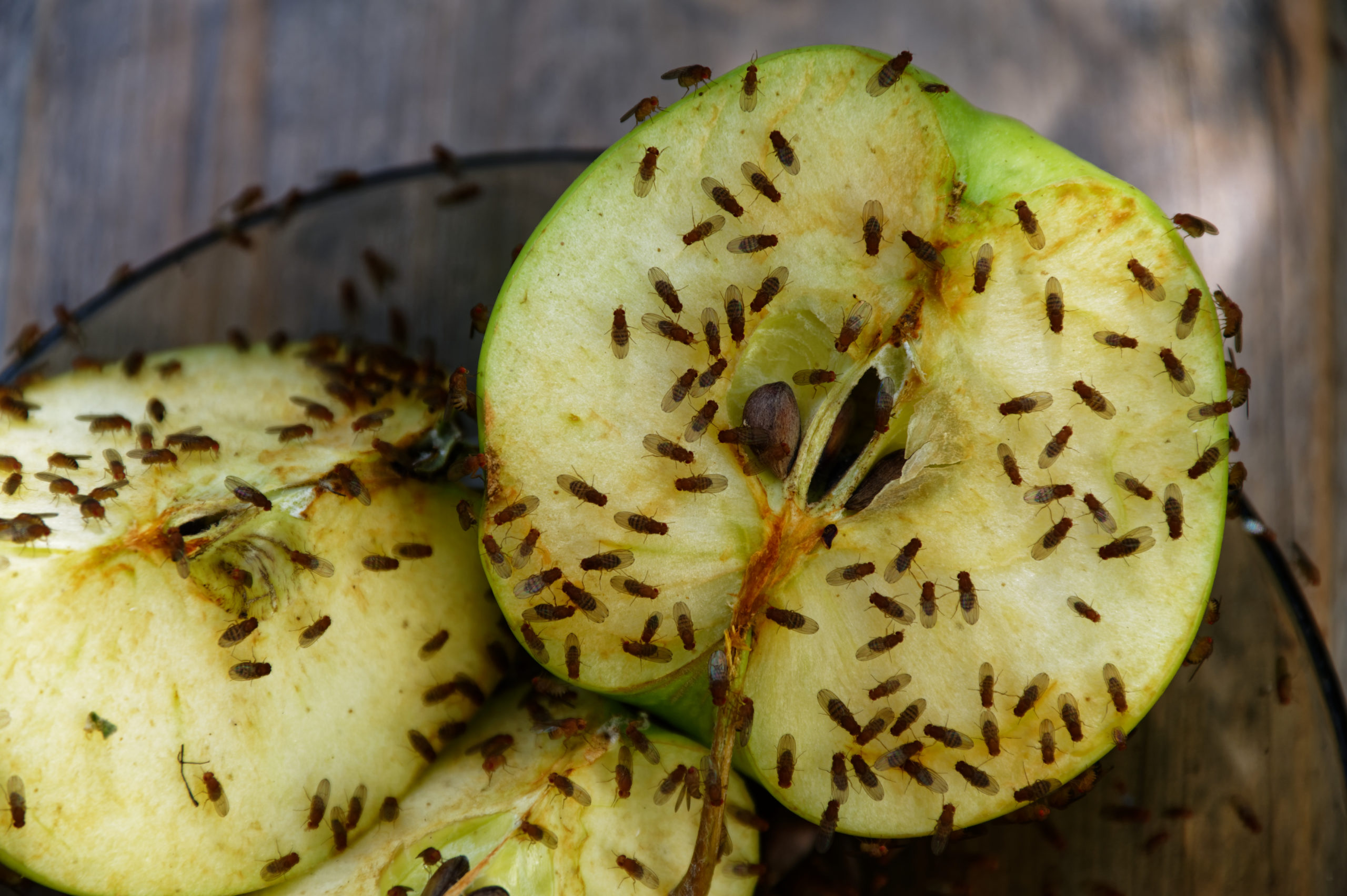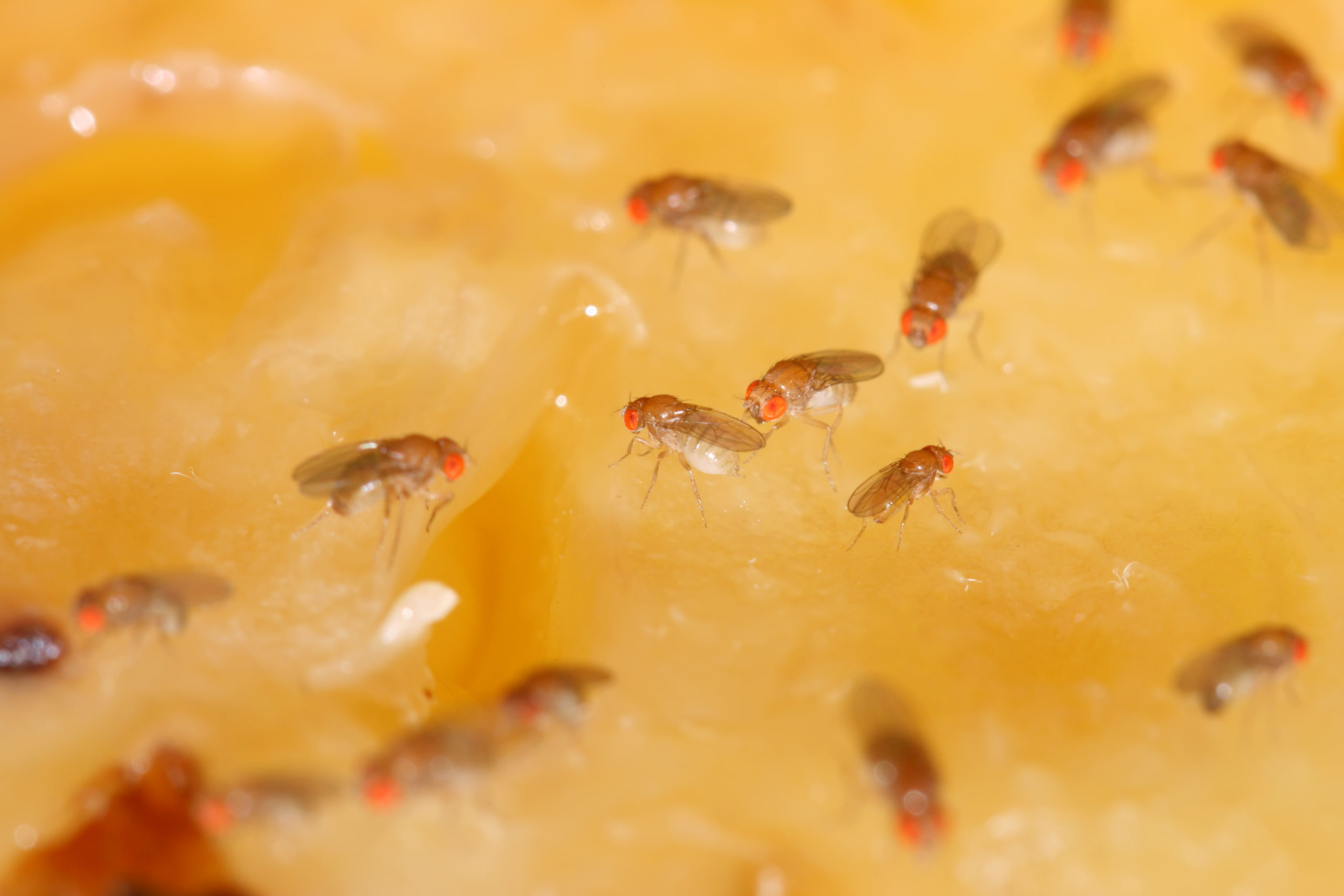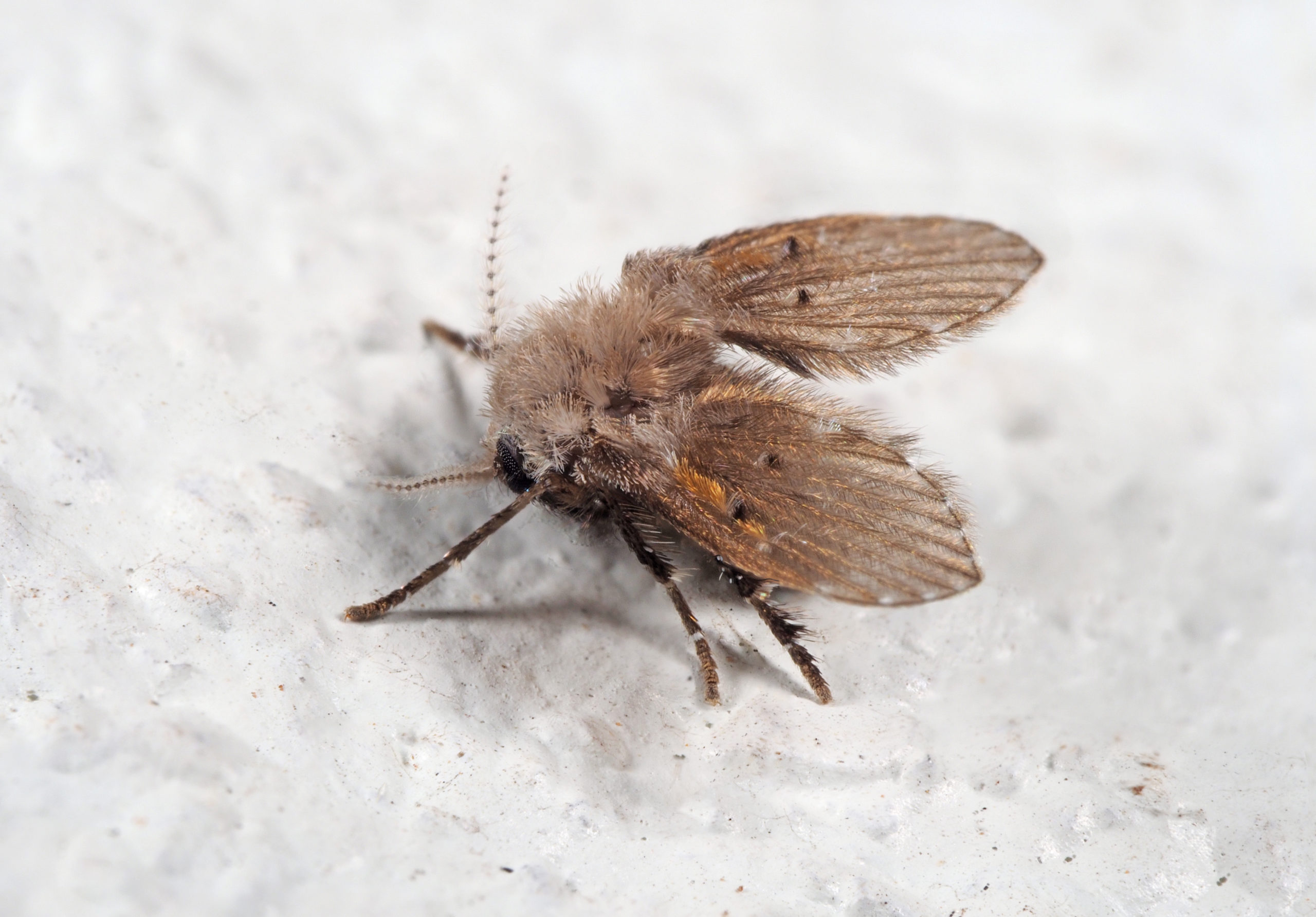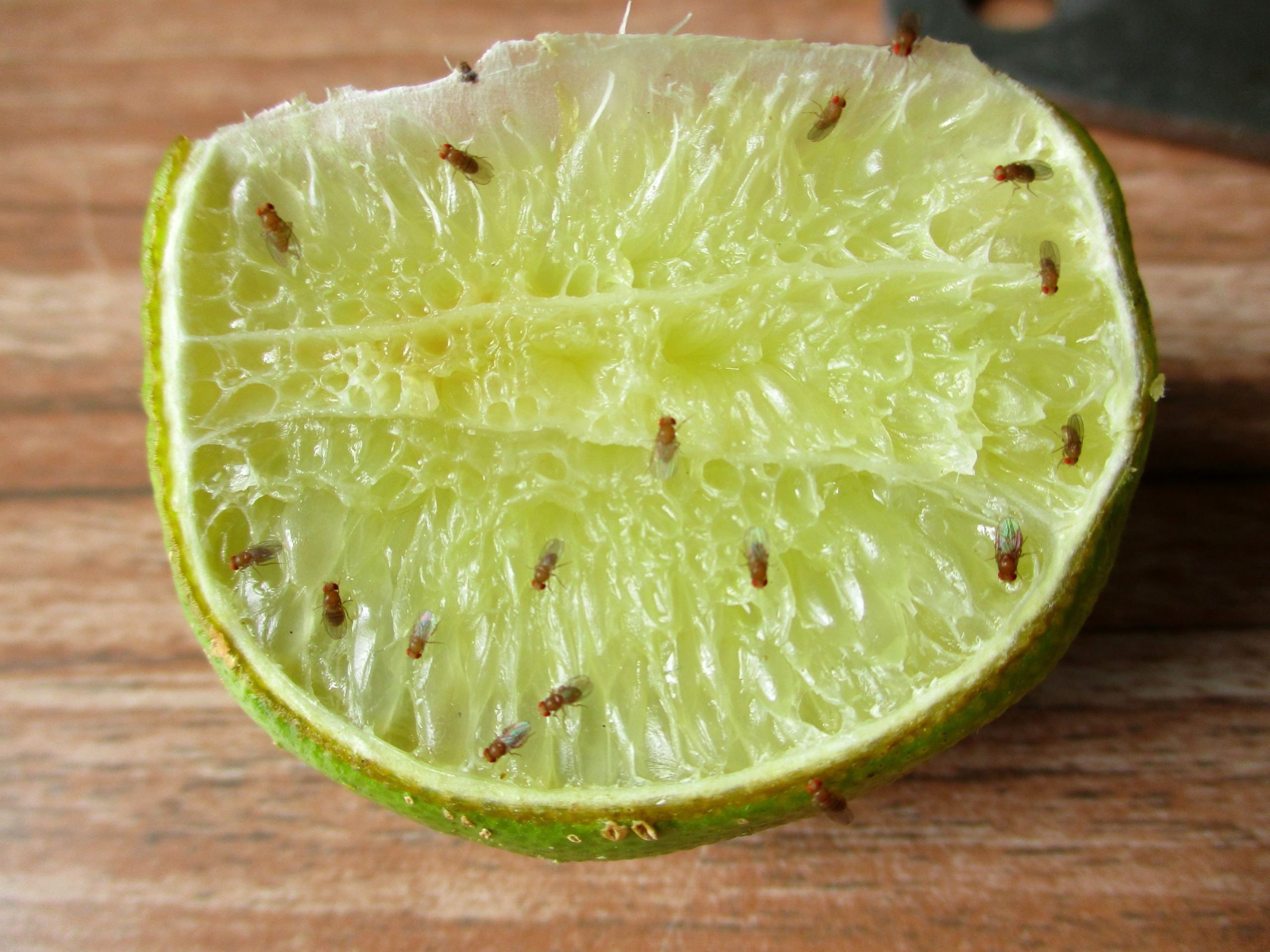They May be Small Flies, But They’re Big Nuisances
They May be Small Flies, But They’re Big Nuisances
Flies in Our Homes
Flies are awful pests. They have short life spans but are quick to breed, often leading to substantial infestations within a short period of time. Most commonly flies inhabit certain areas of the home including kitchens – around sources of food and garbage cans – and bathrooms – around the drains and piping. Unfortunately, exterminators typically cannot treat for flies as the infestations are caused by a stimulant within the environment and no matter what you spray, the problem will perpetuate until the stimulant is removed. In this blog we cover some of the most common small flies that invade homes and tips on how to keep them from infesting your space. 
Fruit Flies (Drosophila spp.)
Fruit flies are extremely common pests that are attracted to your home by simple temptations such as overripe fruits and/or vegetables. They use these ripe, rotten, or decaying vegetation both as food sources and as a nesting site where they lay their eggs. In addition to their taste for fruits and vegetables, fruit flies are also drawn to fermented drinks (such as wine, beer, or other alcohol) and areas with increased moisture. There are two main different types of fruit flies that invade homes: red-eyed and dark-eyed. Red-eyed fruit flies have lighter, honey-colored bodies, translucent wings, measure roughly 1/8’ in length, and, of course, red eyes. Also true to their name, dark-eyed fruit flies have dark brownish-black eyes that match the color of their body. Their wings are also primarily translucent, although they are tinged slightly brown, and their body lengths tend to be slightly larger than that of the red-eyed fruit flies’. As with most flies, identifying and removing the source that is attracting them is the best means to combat fruit flies. This can be fruit on your countertops, an unsealed garbage can, open food in the pantry, leaking pipes under the kitchen sink, dirty dishes left out, or even a garbage can whose lining has been severed and the interior of the can is caked in old waste that needs to be washed out. After eliminating whichever source you’ve determined is most likely attracting them, you can also make a simple homemade fruit fly trap to capture and dispose of the remaining flies. The trap consists of a jar with a bit of fruit in it at the bottom and a rolled-up bit of paper forming a tunnel with a small entry point facing the fruit. Baited in by the fruit, the flies should travel down the length of the funnel and enter the jar. But after feasting on the bait, they will find it especially difficult to locate the small hole that they entered from and will most likely remain inside the jar as their fellow flies begin to join them. 
Drain Flies (Telmatoscopus albipunctatus)
Luckily, these tiny flies are typically a temporary problem. Also known as moth flies or sewer flies, these little nuisances measure between 1/16” to 1/4” in length and have a furry appearance with tiny hairs covering their bodies, legs, and wings. They are typically brown or grey in color and have a somewhat sluggish or lazy way of flying about. As their name suggests, drain flies are known for congregating around toilet bowls, floor drains, shower drains, sink drains, and even areas just with excessive moisture. This is because the larval state of drain flies requires stagnant water to survive, leading to these areas becoming breeding sites for the flies. Interestingly, this is often why drain flies are found in homes following vacations as the drains have not been used in a while. Once normal water flow resumes in the problematic drains the flies that aren’t washed away will leave, relocating to another breeding site. In the case that it wasn’t just a vacation that led to the accumulation of these flies, you can check for clogged drains, leaking pipes, or areas that may need a dehumidifier to prevent moisture buildup. 
Gnats
While people often consider gnats as their own category of flies, the word ‘gnat’ is actually a colloquial term used to describe a number of different species of insects that appear to be super small flies. These small flies are typically part of the suborder Nematocera meaning that they are a type of fly that is characterized by their thin limbs. Some of the flies most commonly referred to as gnats include fruit flies, drain flies, phorid flies, and fungus flies. 
Citations
Gnat (no date) Amateur Entomologists’ Society (AES). Available at: https://www.amentsoc.org/insects/glossary/terms/gnat/ (Accessed: June 24, 2021). Mendoran, S. (2021) What Causes Gnats and How to Get Rid of Them, Dengarden. Available at: https://dengarden.com/pest-control/gnat (Accessed: June 24, 2021). Pest Control Technology (2021) “Small Fly Management,” September, pp. 38.5–38.5. Posegate, A. (2011) The scoop on gnats: the weather they like & why they drive us nuts, The Washington Post. Available at: https://www.washingtonpost.com/blogs/capital-weather-gang/post/the-scoop-on-gnats-what-weather-they-like-and-why-they-drive-us-nuts/2011/07/26/gIQAjSyoaI_blog.html (Accessed: June 24, 2021). Potter, M. (no date) Fruit Flies, Entomology at the University of Kentucky. University of Kentucky Department of Agriculture, Food, and Environment . Available at: https://entomology.ca.uky.edu/ef621 (Accessed: July 2020). Townsend , L. (no date) Drain Flies or Moth Flies , Entomology at the University of Kentucky . University of Kentucky College of Agriculture, Food and Environment. Available at: https://entomology.ca.uky.edu/ef615 (Accessed: July 2020). Townsend, L. (1997) Midges and Gnats, The University of Kentucky College of Agriculture, Food, and Environment Department of Agriculture. Available at: https://entomology.ca.uky.edu/ef632 (Accessed: June 24, 2021). What are Gnats? Are Gnats Flies? (2021) Ask an Entomologist. Available at: https://askentomologists.com/2021/02/10/gnats/ (Accessed: June 24, 2021).
Request a Free Quote Today
(We do not share your data with anybody, and only use it for its intended purpose)


